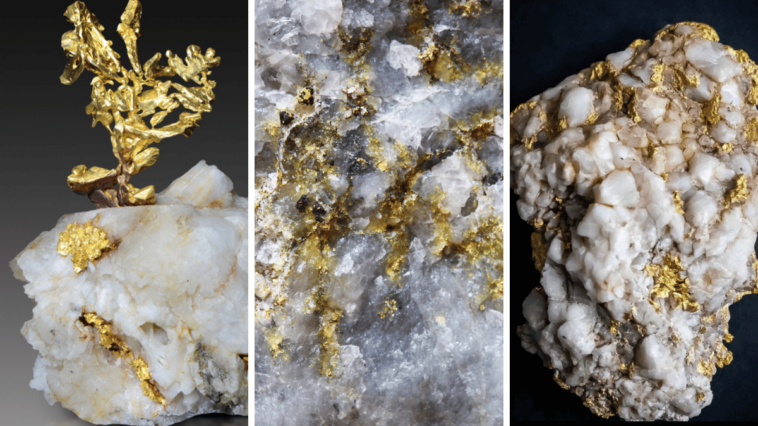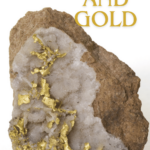Quartz and gold are two of the most captivating minerals on Earth. Often found together, these two have a unique relationship that has not only puzzled but also attracted miners, geologists, and treasure hunters for centuries.
With an undeniable allure, gold has driven prospectors to sift through rivers and excavate enormous mines in hopes of discovering its lustrous presence within quartz veins.
The reasons for their frequent association lie deep in the Earth’s geology, a testament to the complex and fascinating processes that form our planet’s treasures.
Why Is Gold Often Found With Quartz?
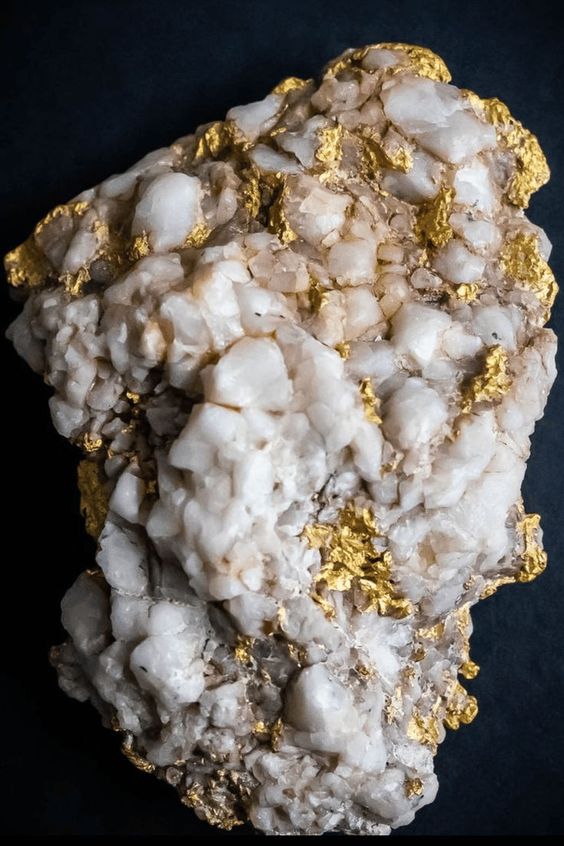
Understanding why gold is so often found in quartz requires diving into the conditions under which both of these minerals form.
Quartz, composed primarily of silicon dioxide, is one of the most common minerals found in the Earth’s crust and it forms under a variety of conditions.
Gold, with its distinctive heavy weight and metallic properties, often becomes trapped in these quartz matrices.
The science behind their co-location is rooted in hydrothermal processes and the movement of mineral-rich fluids that precipitate gold in cracks and voids, where it often solidifies in the company of quartz.
While it is true that gold deposits can be found alone, the presence of quartz often signals to gold prospectors and geologists alike that the conditions were just right for gold to crystallize out of hot, mineral-laden water.
This crystallization process is what has historically led to the formation of rich gold ore inside quartz veins, igniting gold rushes and driving the quest for these precious deposits.
This natural partnership between quartz and gold has both shaped landscapes and influenced economic booms, creating cultural legacies that endure even to this day.
Key Takeaways
- Quartz and gold commonly co-occur due to the geology and hydrothermal processes of the Earth.
- The presence of quartz often indicates potential gold deposits, which has historically led to mining endeavors.
- The relationship between quartz and gold has significantly impacted economic and cultural development.
The Geology Behind the Relationship Between Gold and Quartz
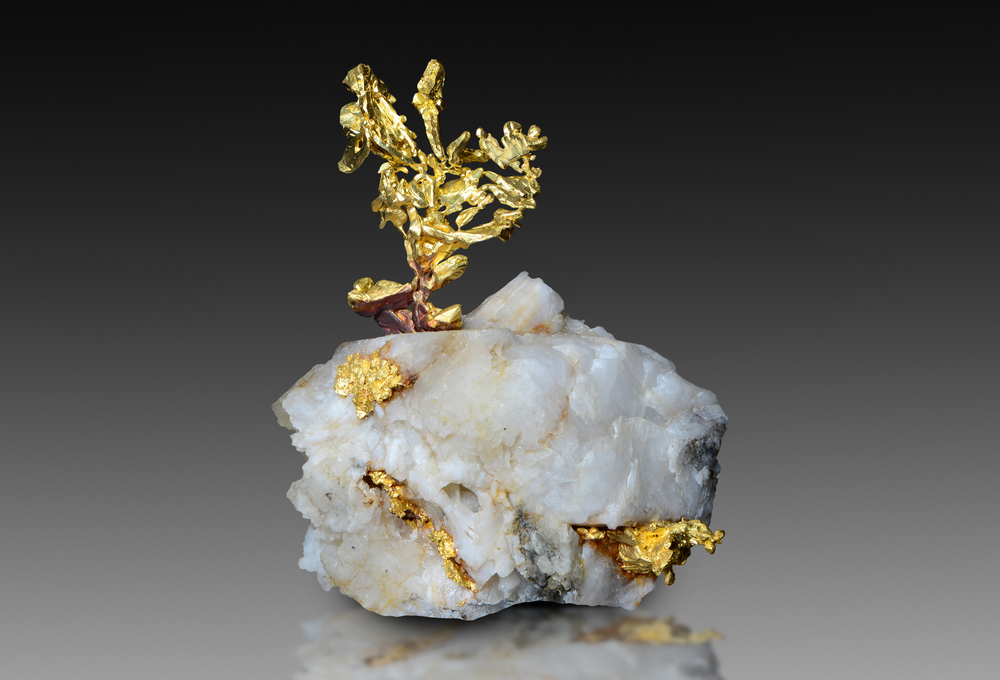
Formation of Quartz Veins
Quartz veins are formed through hydrothermal processes. These events occur when superheated water becomes saturated with silica and other minerals deep within the Earth. As this fluid rises and cools, it often moves along fractures in the Earth’s crust:
- Pressure Decrease: The lowering of pressure as fluids rise causes silica to precipitate, forming quartz.
- Cooling: Cooling of the solution hastens quartz formation; the rate of cooling can influence crystal size.
These quartz veins can become extensive networks, filling cracks and becoming prominent features in the bedrock.
Why Gold Coexists with Quartz
Gold tends to be found with quartz because they share a common formation environment:
- Solubility: Gold can be dissolved in hydrothermal fluids just like silica. It travels in solution until conditions prompt deposition.
- Precipitation: As the hydrothermal fluid cools, gold precipitates near or at the same time as quartz, binding it within the forming veins.
Factors that encourage gold to drop out of solution include:
- Changes in pressure and temperature
- Chemical reactions with other elements in the rock
- The presence of certain reducing agents
The chemical characteristics of hydrothermal fluid and the surrounding environment play critical roles in gold deposition within quartz veins. These processes explain why miners often find gold while quarrying quartz veins.
Historical Gold Rushes and Quartz
In the mid-19th century, gold rushes in California and Australia signified a striking relationship between gold and quartz, as the precious metal was frequently mined from quartz veins.
California Gold Rush
During the California Gold Rush, starting in 1848, prospectors found gold embedded in quartz veins running through the Sierra Nevada mountains. The extraction of gold in these quartz-rich regions spurred a massive influx of miners, leading to the establishment of boomtowns. Substantial quantities of quartz were removed in the process of mining gold, exemplifying the close bond between the two minerals.
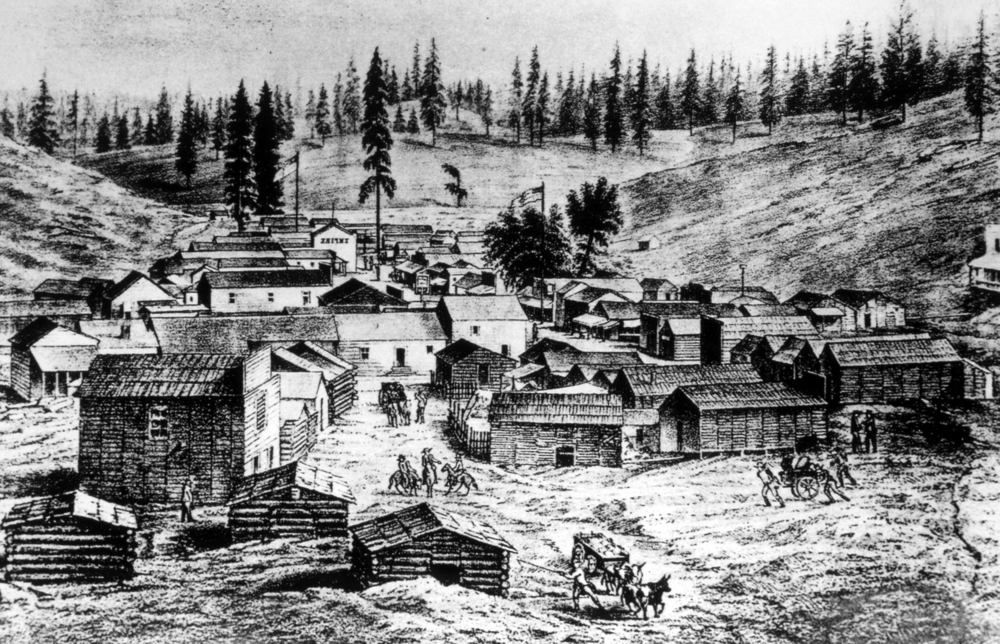
Australian Goldfields
In the Australian Goldfields, gold-quartz connections were also evident, especially starting with the 1851 discovery in New South Wales and Victoria. Here, the Ballarat and Bendigo regions became celebrated for their large quartz reef systems containing gold. Mining operations, often conducted underground, targeted these quartz reefs to yield the embedded gold, illustrating the natural co-location of gold within quartz deposits across different continents.
The Science of Gold Deposition
Gold commonly accompanies quartz because it is deposited from mineral-rich fluids during periods of geological activity. This section explores the important processes and conditions that lead to the concentration of gold in quartz veins.
Hydrothermal Processes
Hydrothermal fluids are primarily responsible for the transportation and deposition of gold. These are hot, aqueous solutions that originate from a magma source beneath the Earth’s crust. As these fluids ascend, they dissolve minerals from the surrounding rock, including particles of gold. Upon reaching cooler and lower pressure environments near the surface, the solubility of minerals within these fluids decreases and precipitation occurs, forming quartz veins often laden with gold.
- Key Factors:
- Temperature: Typically ranges from 200°C to 400°C.
- Pressure: Decreases as the fluids move towards the surface.
- Composition: Silica-rich fluids are conducive to quartz formation.
Geochemical Conditions Favoring Gold
Certain geochemical conditions must be present for gold to precipitate out of hydrothermal solutions:
- Reduction-oxidation (redox) potential: Gold deposits when redox conditions shift to reduce soluble gold into its metallic form.
- pH levels: Slightly acidic to neutral pH levels in hydrothermal fluids can increase gold solubility and promote deposition upon changes.
- Presence of sulfur: Often gold co-precipitates with sulphide minerals, which can later decompose to release gold into quartz veins.
- Chemical Reactants:
- Sulfur: Acts as a catalyst for gold deposition.
- Oxygen: Fluctuating levels can trigger gold to precipitate.
- Carbon Dioxide (CO₂): May play a role in the transport and deposition of gold.
Through these processes and under these conditions, gold is concentrated and deposited, marking the environments where humans have historically found bountiful sources of this precious metal.
Mining Techniques for Gold in Quartz
Extracting gold from quartz requires methods that separate the two materials effectively. Historical techniques often relied on manual labor, while contemporary methods incorporate advanced technology and machinery.
Early Mining Methods
In the 1800s, panning and sluicing was the simplest form of placer mining, used to recover gold from quartz-rich sands and gravels. The panner fills the pan with sediment and water, and then swirls it around. Gold, being much denser than rock, settles at the bottom.
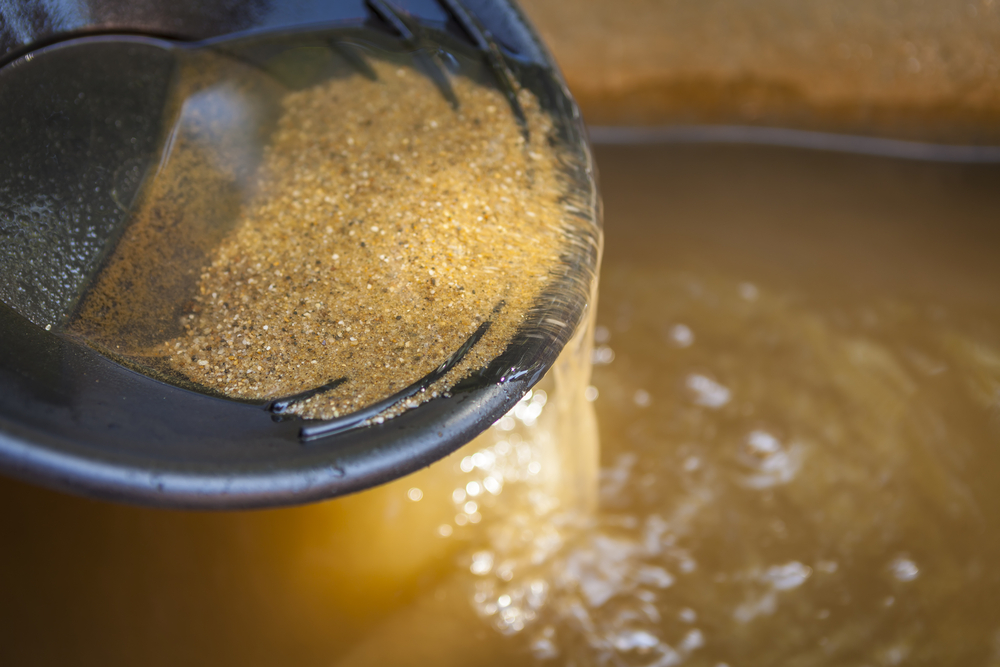
Hard rock mining involved miners digging tunnels deep into the earth to reach the quartz veins. The extracted quartz rocks with embedded gold were then ground into a fine dust in stamp mills.
Modern Extraction Techniques
Today, gold extraction from quartz employs two main techniques: Cyanidation and Gravity Separation.
Cyanidation involves crushing the quartz ore into a fine powder and mixing it with a cyanide solution, which dissolves the gold. The resulting gold-cyanide complex is then extracted and processed to obtain pure gold.
Gravity separation capitalizes on the density difference between gold and quartz using equipment like sluices, shaking tables, or vortex concentrators.
Economic and Cultural Impact
The intimate relationship between quartz and gold has significantly influenced economies and cultures, particularly during gold rush periods when their combined discovery led to economic boom times and inspired artistic creation.
Influence on Local Economies
The discovery of gold in quartz veins has historically transformed quiet settlements into bustling towns. For example, during the California Gold Rush, Sutter’s Mill experienced a surge in population from a few hundred to over 300,000 individuals within a span of seven years. The rapid influx boosted local businesses, leading to the rise of services and amenities to support the growing population.
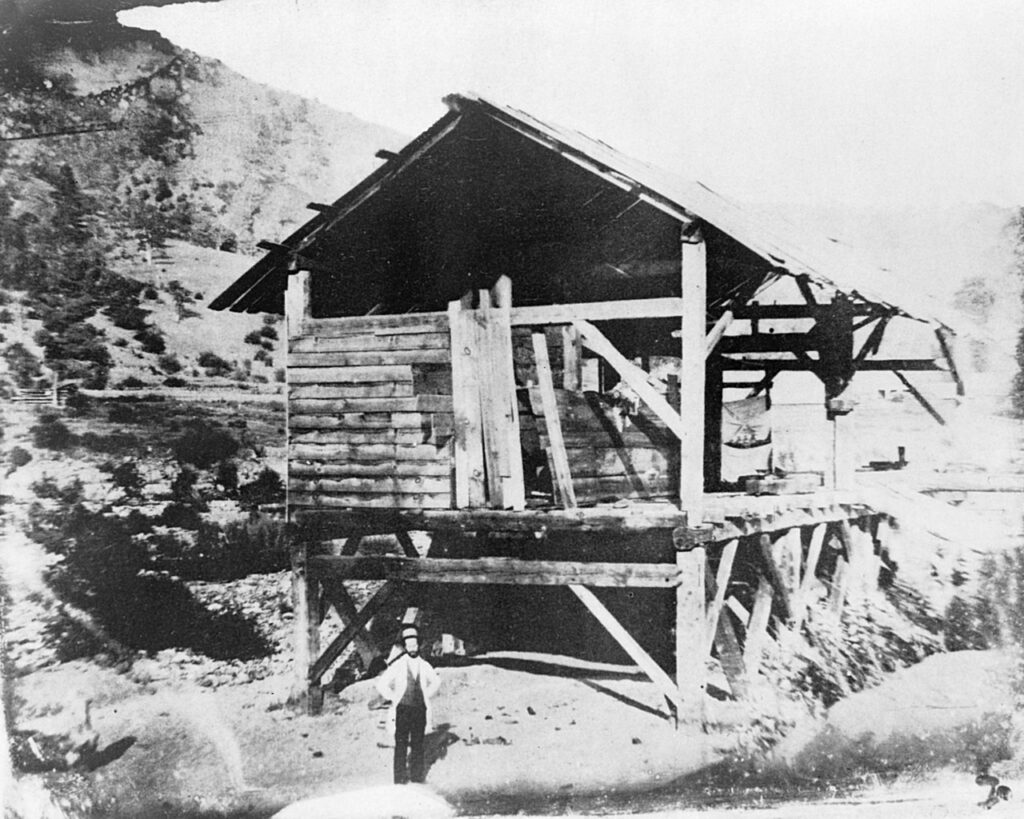
Gold and Quartz in Jewelry and Art
Gold and quartz have been coveted materials in jewelry and art since ancient times. They are often combined to create pieces that highlight the contrast between gold’s warmth and quartz’s cool clarity. For instance:
- Italian Renaissance Art: Featured gold in religious paintings, emphasizing its divine glow
- Modern Jewelry: Quartz often serves as a durable and versatile setting for gold accents
These materials’ inherent beauty and rarity underpin their continued use in creating items that symbolize status, wealth, and artistic expression.
- Online rock and mineral club for collectors of all levels!
- Find community with like-minded rock and mineral enthusiasts.
- Monthly Giveaways!
- Free Access to Entire Digital Library of Products (annual memberships)

